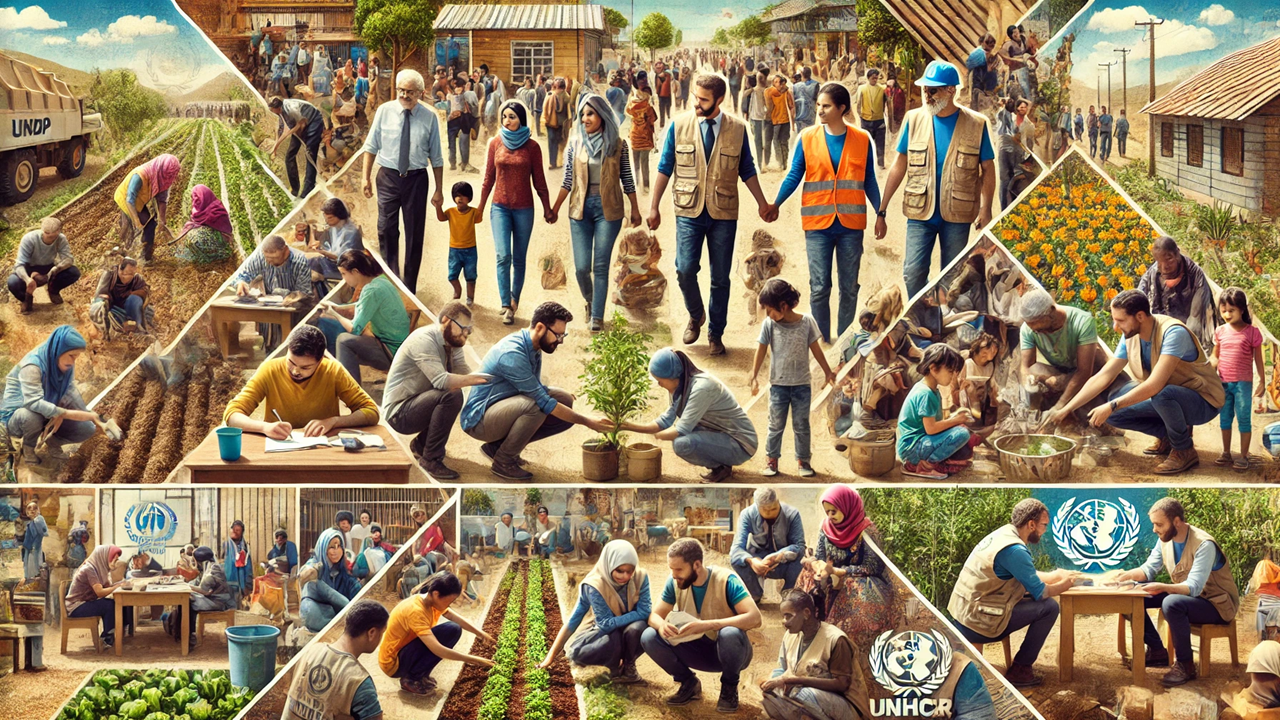A Global Effort: UNDP and UNHCR Unite to Tackle Forced Displacement
The "Partnership in Action" report by UNDP and UNHCR outlines a strategic collaboration to address forced displacement and statelessness from 2023 to 2025. The partnership focuses on livelihoods, SDG integration, rule of law, conflict prevention, internal displacement, climate adaptation, and statelessness. By combining resources and expertise, the partnership aims to provide sustainable solutions and support to displaced individuals and host communities worldwide.

As global conflicts and disasters force millions from their homes, the United Nations Development Programme (UNDP) and the UN Refugee Agency (UNHCR) are stepping up their collaborative efforts. The "Partnership in Action" report (2023-2025) outlines a strategic alliance designed to address the increasing challenges of forced displacement and statelessness. This partnership leverages the strengths of both organizations to support forcibly displaced individuals, stateless persons, and the communities that host them.
Seven Pillars of Collaboration
The Global Collaboration Framework for Inclusion and Solutions guides this partnership, focusing on seven key thematic areas. The initiative aims to enhance access to sustainable jobs and livelihoods for displaced individuals and host communities. By creating economic opportunities, the partnership seeks to build resilience and self-reliance among affected populations. Including displaced and stateless persons in regional, national, and sub-national frameworks is crucial for achieving the Sustainable Development Goals (SDGs). This approach ensures that no one is left behind in the global development agenda. Strengthening governance and rule of law institutions helps prevent and address protracted displacement and statelessness. This includes building capacity at national and local levels to manage and resolve displacement issues effectively. Developing knowledge and capacity in conflict prevention and peacebuilding is essential to creating conditions for sustainable peace and preventing future displacement crises. The partnership adopts a durable solutions approach to internal displacement, aligning with the Inter-Agency Standing Committee’s guidelines and the Secretary-General’s Action Agenda on Internal Displacement. Integrating displacement considerations into climate change adaptation and disaster risk reduction policies is critical. The partnership aims to mitigate environmental impacts and enhance community preparedness for climate-related shocks. Mainstreaming statelessness issues in development plans and discourse ensures that stateless persons are included in efforts to achieve equitable and sustainable development.
Real-World Impact: Case Studies
The partnership between UNDP and UNHCR is already making a significant impact in various regions. In Afghanistan, the agencies have linked humanitarian and development actions in 25 priority areas, benefiting returnees and host communities through initiatives like the Community-based Protection and Solutions Programme Response (Co-PROSPER) and the Area-Based Approach for Development Emergency Initiative (ABADEI). In Myanmar, the Rakhine Triple Nexus Programme supports the voluntary return of refugees from Bangladesh and promotes resilience-based development in Rakhine State. Despite challenges such as COVID-19 and political instability, the programme has implemented numerous quick-impact projects to improve food security, livelihoods, and social cohesion. Enhancing resilience to climate-related risks and providing livelihoods through tree-planting initiatives in Uzbekistan has benefited Afghan refugees and host communities. These efforts contribute to the national Yashil Makon (Green Nation) initiative, aimed at increasing green areas across the country.
The Regional Refugee and Resilience Plan (3RP), co-led by UNDP and UNHCR, combines humanitarian and development responses in Egypt, Iraq, Jordan, Lebanon, and Türkiye. Since 2015, the 3RP has channeled over $24 billion to support Syrian refugees and host communities, demonstrating the power of coordinated, multi-agency efforts. Joint studies on security and displacement in Burkina Faso have informed the development of a national strategy for internally displaced persons (IDPs) and host communities. The strategy embeds the humanitarian-development-peace (HDP) nexus approach, ensuring comprehensive and sustainable solutions.
Future Plans and Financial Commitment
Looking ahead to 2024 and 2025, the partnership aims to expand its reach and deepen its impact. Guided by the Global Collaboration Framework, UNDP's Strategic Plan (2022-2025), and UNHCR's Strategic Directions (2022-2026), the collaboration will focus on implementing the Global Compact on Refugees and the 2030 Agenda for Sustainable Development. Key international pledges made at the Global Refugee Forum in 2023 support these efforts, emphasizing the importance of combining knowledge, capacity, and funding.
The collaboration between UNDP and UNHCR not only increases the chances of achieving inclusion and durable solutions for displaced populations but also brings coherence between humanitarian, development, and peace actions. This integrated approach reduces duplication of efforts, creates synergies, and delivers impactful results that neither organization could achieve alone.
- FIRST PUBLISHED IN:
- Devdiscourse










